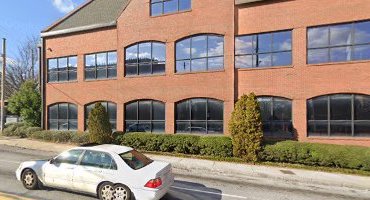Integration of arts and sciences drives creation of new lesson plans
Mar 24, 2017
Marta Hatzell, an assistant professor in the Woodruff School of Mechanical Engineering, has a keen interest in creating a sustainable environment. She is focused on reducing society’s costly energy needs.
Fred Okoh teaches chemistry courses at Arabia Mountain High School in Dekalb County. Constantly looking for creative teaching methods, his goal is to help students connect the science they learn from textbooks to real-world applications.
Through the Partnerships for Research, Innovation, and Multi-Scale Engineering (PRIME) Research Experiences for Teachers Program, Hatzell and Okoh have partnered to create an innovative way to teach high school students electrochemistry techniques for water purification.
“Current water purification techniques can be costly and heavily energy dependent,” Hatzell says. Hoping to replace traditional separation methods such as filtering and boiling, her research group is developing a carbon electrode-based platform to desalinate water. The technique takes advantage of the ability of salts, when dissolved in water, to separate into positive and negative ions.
The device features two carbon electrodes, one at the top and the other at the bottom of a hollow cavity. When an electric field is applied, the electrodes become charged, one positively and the other negatively. As saltwater flows through the cavity, the ions move toward the oppositely charged electrode, leaving the exiting water stream free of salts.
The movement of salts in Hatzell’s technique, termed “capacitive deionization,” reminds Okoh of dance. “The whole movement flows like a dance choreography,” he says.
Hatzell and Okoh – together with Georgia Tech summer undergraduate researchers Katherine Freesemann, Zeya Luo, and Bianca Costa, and teacher-turned assistant principal of Arabia Mountain Tanya Mason – have created a lesson plan to introduce capacitive deionization to Okoh’s high school students by comparing it to dance steps. They are trying the lesson plan this spring 2017 semester.
Okoh is one of 15 teachers participating in PRIME this year. Now in its third year, PRIME is a collaboration between Center for Education Integrating Science, Mathematics, and Computing (CEISMC) and the Woodruff School of Mechanical Engineering funded by the National Science Foundation Engineering Directorate. PRIME recognizes the similarities between art and engineering, connecting them in a way that enables students to appreciate both disciplines.
PRIME pairs K-12 teachers in the Metro-Atlanta school districts with Georgia Tech College of Engineering faculty to design projects integrating art with science, technology, engineering, and mathematics (STEM) research. PRIME brings teachers to Georgia Tech’s campus for a research-intensive, seven-week mentoring period. In that time, the teacher-faculty duos design a lesson plan to teach high school students the faculty member’s research by making connections to aspects of creative arts already familiar to students.
“Many students may not remember the science content they are taught by a lecture, but a hands-on experiment or activity coupled with a creative music, dance, drama, or visual art activity is unforgettable,” says Jamila Cola, a research scientist at CEISMC and the principal investigator of PRIME. For instance, the process needed to layer music with different instruments to make a final piece can be compared to the micro-fabrication process mechanical engineers use to make microsensors. “PRIME teachers and students are pushed to be creative. The teachers have to carefully think about the similarities between the fine arts standards and science standards, and students are pushed to collaborate and create with their understanding of science and engineering,” she says.
PRIME has opened a way for Georgia Tech and Metro Atlanta school districts to work together to enhance STEM education. A total of 42 teachers have participated in PRIME to create original lesson plans, each incorporating different aspects of art – such as music, drama, visual arts, and dance – to introduce engineering research to elementary, middle, and high school students.
Written by: Sabiha Runa - CEISMC Communications



